|
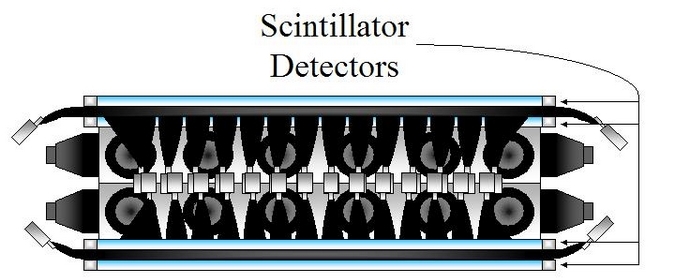 |
|
The scintillator detectors in TIGER are
responsible for determining the charge of a particle that passes
through the instrument. Since the particles the pass through
TIGER have a lot of kinetic energy, we can assume that there are no
orbital electrons in the incoming atom. For example, if an iron
nucleus passes through the instrument, the scintillator will only "see"
the 26 protons that are in the nucleus of the atom. Since iron is
the only element that has 26 protons in its nucleus, we can tell from
the scintillator, with an extremely reasonable degree of accuracy, that
the particle that entered was in fact iron. |
|
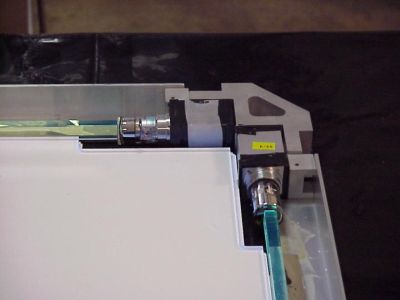
|
|
The scintillator is made of a special kind of
plastic called poly-vinyl toluene (PVT). When a charged particle
passes through the PVT, it excites and ionizes the molecules in the
plastic. In so doing, electrons in the PVT molecules move up to
higher orbital energy levels and release a bluish light as they drop
back down. The PVT is designed so that the light that is emitted
inside the plastic is totally internally reflected. The light
bounces up and down inside the PVT until it reaches the end. Here
the light is able to escape out the side of the scintillator, where it
enters another piece of plastic known as a wavelength shifter bar
(WLSB). This process is shown in the figure below. Once
inside the WLSB, the wavelength of the blue light is shifted to green,
continues to reflect internally inside the WLSB, and is piped down to
the photomultiplier tubes on either end of the WLSB (see photo
above). In this way, only 8 PMTs (2 on each corner) are needed to
read out an entire
~1 m2 panel of PVT. |
|
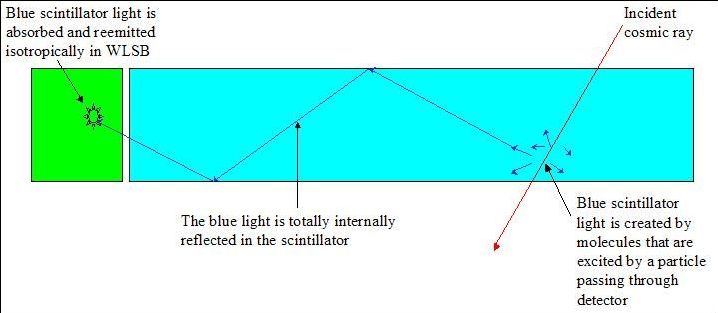 |
|
In TIGER, there are four scintillating
detectors, S1, S2, S3, and S4. It is good to have this kind of
redundancy when building particle detectors. The sum of the
signals from several scintillator detectors is always better than just
the signal from one of them. Furthermore, if one or more of the
scintillator detectors fail, the experiment will only suffer a
handicap, not a total failure. The S1 and S2 scintillators are
the most important for deriving the charge of a particle.
Coincidence in the detector is also determined by the scintillator
detectors. If the signal in the required detectors is high
enough, the software decides that a particle has indeed passed through
the detector, and proceeds to read out the light output. For this
and the last TIGER flight, the following coincidence pattern was
used: (S1 OR S2) AND (S3 OR S4). |
|
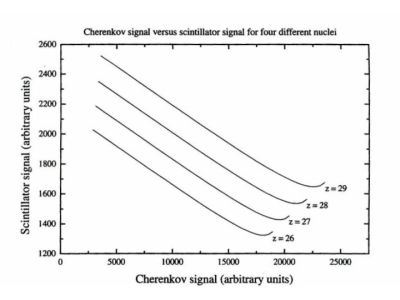
|
|
The plot above shows what the
scintillator signal (dE/dx) would look like when plotted against the
Cherenkov (energy) signal. As the energy increases from 0, the
scintillator signal drops rapidly at first. However, as the
energy of the incoming nucleus reaches relativistic proportions, it
becomes a minimum ionizing particle (MIP) and the scintillator once
again begins to respond. The signal that a certain nucleus
creates in the scintillator is highly sensitive to its charge, as was
discussed before. The scintillator signal, while also somewhat
sensitive to the energy of the particle, is proportional to Zn,
where n
is between about 1.5 and 2. Looking again at the plot to the
left, as
more and more particles trigger the detectors, charge bands will begin
to form in the data. Here we see where the contours of Fe, Co, Ni
and Cu would lie with respect to one another. |
|
|
|
One of the TIGER scintillators, all ready to go
|
|
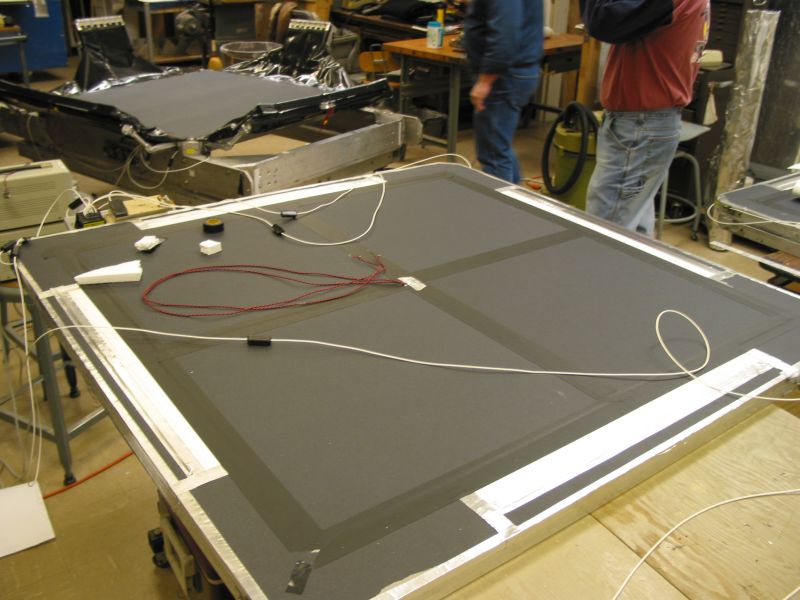 |



